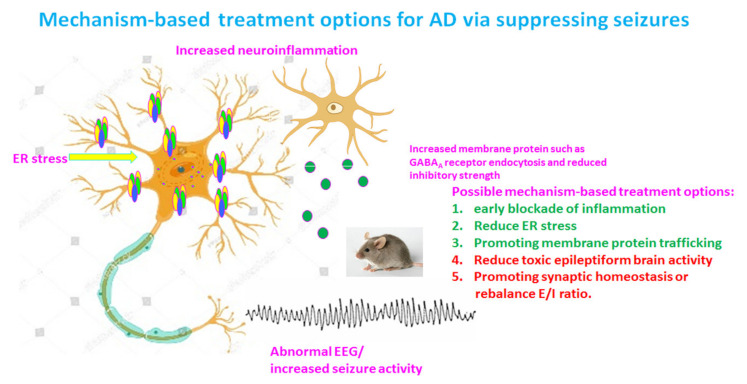Figure 2.
Potential mechanism-based treatment options for Alzheimer’s disease (AD) via suppressing toxic epileptiform discharges. There are multiple pathologies in a chronic disease state such as AD. In addition to the established amyloid hypothesis and tauopathy, pathological features for AD likely also include increased neuroinflammation, endoplasmic reticulum (ER) stress, impaired protein membrane trafficking, and increased toxic epileptiform discharges due to altered brain excitation and inhibition (E/I) balance. Therefore, any pharmacological or genetic approaches that can block neuroinflammation, reduce ER stress, promote vesicular protein trafficking, or correct E/I imbalance would be beneficial and disease modifying for AD.

